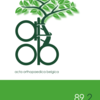How to spot the recurring lumbar disc? Risk factors for recurrent lumbar disc herniation (rLDH) in adult patients with lumbar disc prolapse: a systematic review and meta-analysis
Risk factors, lumbar disc, disc herniation, recurrence, microdiscectomy
Published online: Nov 05 2023
Abstract
Despite a fast-growing evidence-base examining the relationship of certain clinical and radiological factors such as smoking, BMI and herniation-type with rLDH, there remains much debate around which factors are clinically important. We conducted a systematic review and meta-analysis to identify risk factors for recurrent lumbar disc herniation (rLDH) in adults after primary discectomy. A systematic literature search was carried out using Ovid-Medline, EMBASE, Cochrane library and Web of Science databases from inception to 23rd June-2022. Observational studies of adult patients with radiologically-confirmed rLDH after ≥3 months of the initial surgery were included, and their quality assessed using the Quality-In-Prognostic-Studies (QUIPS) appraisal tool. Meta-analyses of univariate and multivariate data and a sensitivity-analysis for rLDH post-microdiscectomy were performed. Twelve studies (n=4497, mean age:47.3; 34.5% female) were included, and 11 studies (n=4235) meta-analysed. The mean follow-up was 38.4 months. Mean recurrence rate was 13.1% and mean time-to-recurrence was 24.1 months (range: 6-90 months). Clinically, older age (OR:1.04, 95%CI:1.00-1.08, n=1014), diabetes mellitus (OR:3.82, 95%CI:1.58-9.26, n=2330) and smoking (OR:1.80, 95%CI:1.03- 3.14, n=3425) increased likelihood of recurrence. Radiologically, Modic-change type-2 (OR:7.93, 95%CI:5.70-11.05, n=1706) and disc extrusion (OR:12.23, 95%CI:8.60-17.38, n=1706) increased likelihood of recurrence. The evidence did not support an association between rLDH and sex; BMI; occupational labour/driving; alcohol-consumption; Pfirmann- grade, or herniation-level. Older patients, smokers, patients with diabetes, those with type-2 Modic-changes or disc extrusion are more likely to experience rLDH. Higher quality studies with robust adjustment of confounders are required to determine the clinical bearing of all other potential risk factors for rLDH.
